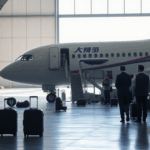Table of Contents
This week, Australia made headlines by taking significant steps to strengthen its ties with China. Prime Minister Albanese embarked on a six-day journey filled with high-level discussions and collaborative engagements with Chinese officials. But what does this mean for Australia in the context of the growing global power rivalries? Let’s dive in.
Strengthening Diplomatic Ties
During his visit, Prime Minister Albanese had separate talks with Premier Li Qiang, where both leaders aimed to foster a cooperative atmosphere to resolve existing tensions. These meetings were marked by constructive dialogue, emphasizing the importance of keeping communication channels open between the two nations.
A standout moment was the CEO roundtable they co-chaired, which brought together nearly 30 business executives from both Australia and China. This gathering reflects a shared interest in boosting economic collaboration—something we can all get behind!
The banquet hosted by Premier Li showcased a ceremonial commitment to friendship, featuring live performances of iconic Australian songs.
While these gestures may seem symbolic, they play a crucial role in softening relations, allowing both sides to engage on a more personal level. Such cultural exchanges help build trust, which is essential in any diplomatic relationship—don’t you think?
Understanding Australia’s Strategic Position
Australia’s diplomatic moves come at a time when the country is recalibrating its foreign policy in response to a shifting geopolitical landscape. Visits to cities like Shanghai and Chengdu underscore Australia’s efforts to engage directly with key economic hubs in China, showing a proactive stance in addressing its strategic interests.
James Laurenceson, a prominent scholar at the Australia-China Relations Institute, notes that Australia’s situation reflects broader regional dynamics, where countries must navigate complex relationships with powerful neighbors. Isn’t it fascinating how interconnected the world has become?
This delicate balance requires Australia to clearly articulate its objectives while remaining responsive to China’s emerging global strategies.
The recent interactions signify a recognition of interdependence, where both countries stand to benefit from collaboration in trade, investment, and innovation.
The Road Ahead: Opportunities and Challenges
As Australia seeks to strengthen its economic ties with China, it must also stay alert to the broader implications of this partnership. With the rise of nationalism and protectionist sentiments worldwide, navigating these waters will come with its own set of challenges. The Australian government needs to ensure that its engagement strategies align with national interests while being adaptable to the unpredictable nature of international relations.
Looking ahead, it’s crucial for Australia to maintain a flexible approach, balancing its economic needs with the geopolitical realities of its position in the Asia-Pacific region. As these dynamics evolve, continued dialogue, mutual respect, and a commitment to collaboration will be vital in fostering a stable and prosperous relationship between Australia and China. What do you think will be the biggest challenge they face moving forward?





